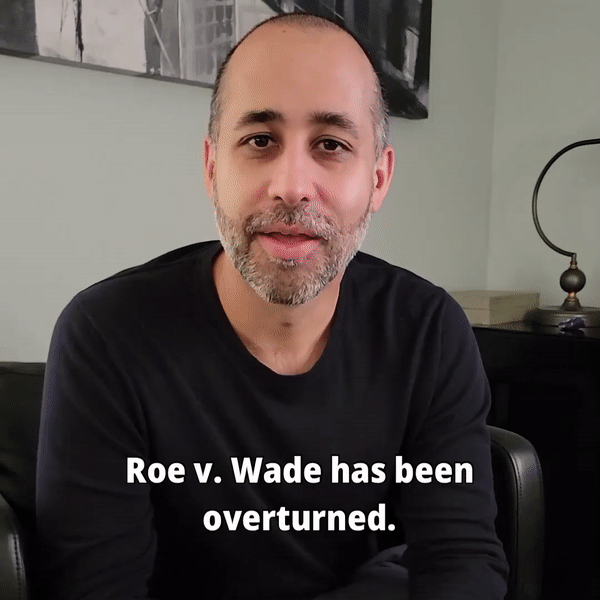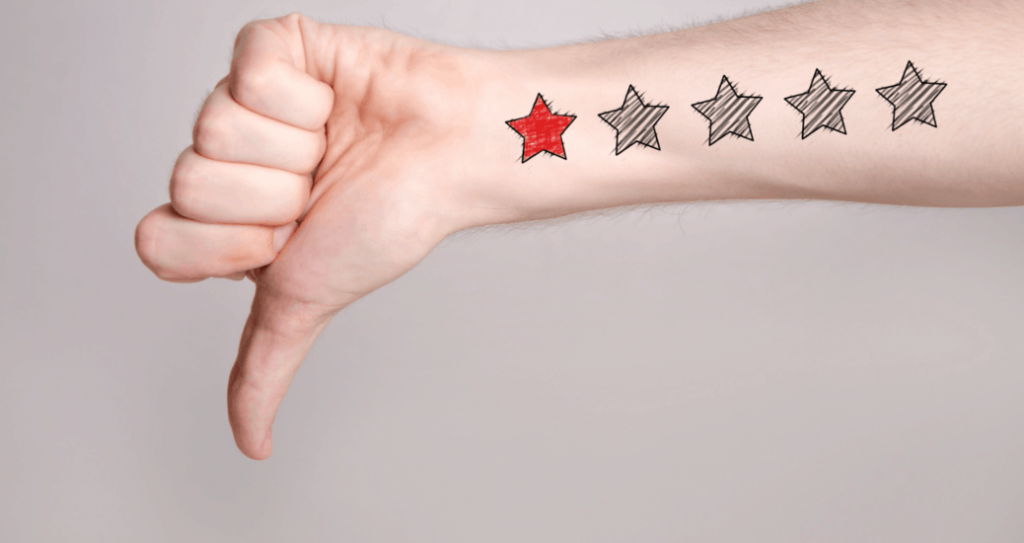There is nothing actually wrong with naming the competition in advertising. Roughly speaking, the legal standard under the Federal Trade Commission Act is that true statements that can be substantiated, and are neither expressly nor implicitly deceptive, even through omission, are okay.
However, it’s a very combative strategy, with risks and rewards from both a marketing and legal standpoint. Marketers should not rush in without weighing all the factors and anticipating some blowback.
From a Marketing Viewpoint
It can work very well. Taco Bell’s recent campaign featuring 38 real-life Ronald McDonalds created quite a buzz. It can also backfire, creating free publicity for the competitor, turning off consumers as mean-spirited or exposing unattractive aspects of the industry. The recent spat between Pizza Hut and Papa John’s left everyone thinking about terrible pizza sauce and worse crust. Some suggest that comparative advertising works better in price-based print ads than it does on television, where the audience may be more easily distracted.
From a Legal Viewpoint
In 1979 guidance, the Federal Trade Commission actually encouraged name brand comparisons, reasoning that truthful and non-deceptive contrast could be a source of important information to consumers, helping them make rational purchase decisions.
Advertising that names names will provoke a response, though, and the battle may be fought in the regulatory or legal arena rather than the marketplace. An aggrieved competitor may respond in a variety of escalating ways before resorting to litigation under Section 43(a) of the Lanham Act.
Four Alternatives Short of Litigation
Whether your business uses or feels abused by comparative advertising, it is important to be aware of four potential non-litigation responses to claims thought to be false or misleading.
Demand Letter
An attorney’s demand letter, also known as a cease-and-desist, is the least expensive of the alternatives and a likely prelude to any other move. It sets out the legal argument against the truth of the claim and demands modification or discontinuation of the advertisement. Occasionally that is all that’s necessary, but it does nothing to address the harm that may have been done by false claims.
Takedown Request
In an effort to comply with their internal policies, broadcast outlets and publishers will usually take an offending advertisement down in response to a well-constructed argument with supporting evidence demonstrating that an advertising claim is false or misleading. The same is true of search engines, like Google, which recently took down deceptive pregnancy center ads in response to an investigation by NARAL Pro-Choice America.
Proceeding Before NAD
The advertising industry established the National Advertising Division of the Council of Better Business Bureaus as a forum for industry self-regulation. NAD may review national advertising directed at adults. It looks particularly at whether advertiser claims may be substantiated. With respect to disparaging comparative claims, the issue is whether the comparison is factually accurate and the distinction meaningful to consumers.
A decision in a NAD proceeding is made on the basis of briefs submitted by both sides. An advertiser may appeal an adverse NAD decision to the National Advertising Review Board, but NARB will not consider an appeal unless its decision is likely to be different.
In the end however, complying with a NAD recommendation is completely optional. It’s only enforcement tool is its reputation as the industry watch dog.
State or Federal Regulatory Investigation
Challengers can also ask the FTC or state regulators to investigate comparative advertising claims. Regulators, however, will focus whether the consumer is being harmed, not on the scuffle between competitors.
Among the factors to be considered will be whether there have been consumer complaints, whether a health and safety issue is involved or whether the activity complained of falls under some current regulatory priority such as green marketing or consumer privacy.
This option may still be cheaper than litigation, but it can take years and even if successful is more likely to lead to a change in industry practices than immediate relief for the challenger.
Litigation under the Lanham Act
On the other hand, a challenger under the Section 43(a) of the Lanham Act can ask for an immediate injunction if the advertisement is false or misleading and likely to cause irreparable harm. This is also the only avenue that may lead to money damages if the challenger can show that consumers were actually deceived or confused and that claim affected consumer behavior in a way that harmed the business. It is a very difficult showing to make.
There is the strategic problem with litigation, though. It can look like sour grapes and may actually make the harm suffered by the challenger worse by bringing public attention to the dispute. This may be one reason that suits against Yelp reviewers are still relatively rare.
Comparative advertising is just part of rough and tumble commerce. Market responses may be admirably deft, as was McDonald’s response to Taco Bell, or they can be fumbling and awkward and simply make a bad situation worse.
Challengers who want to make a legal response may not want to do anything more than necessary to stop immediate harm. Steps short of litigation may be sufficient to accomplish that goal. The nuclear option, or litigation under Section 43(a) of the Lanham Act, may be expensive and time consuming, but can be a powerful tool for bringing about a settlement, halting deceptive advertising or recovering damages for harm to a business.



![Ultimate Legal Breakdown: Negative Online Reviews [e288]](https://www.pashalaw.com/wp-content/uploads/2017/06/Ultimate-Legal-Breakdown-Online-Reviews-1-1024x543.jpg)


![How Malls Can Require Stores To Be Open On Thanksgiving [e240]](https://www.pashalaw.com/wp-content/uploads/2015/11/iStock_000066139999_Small-1.jpg)


![The Federal Law That Would Prevent Yelp Gag Clauses [e237]](https://www.pashalaw.com/wp-content/uploads/2015/11/iStock_000008520917_Small.jpg)
![How Nightclub Cover Charges Sparked Discrimination Claims [e234]](https://www.pashalaw.com/wp-content/uploads/2015/10/iStock_000041229130_Small.jpg)
![How One Business Was Awarded Money From An Untrue Yelp Review [e226]](https://www.pashalaw.com/wp-content/uploads/2015/09/iStock_000036615928_Small.jpg)
![How Reddit Caused An Uproar With Unpaid Volunteers [e206] How Reddit Caused An Uproar With Unpaid Volunteers](https://www.pashalaw.com/wp-content/uploads/2015/07/How-Reddit-Caused-An-Uproar-With-Unpaid-Volunteers.png)




![Law in the Digital Age: Exploring the Legal Intricacies of Artificial Intelligence [e323]](https://www.pashalaw.com/wp-content/uploads/2023/11/WhatsApp-Image-2023-11-21-at-13.24.49_4a326c9e-300x212.jpg)
![Unraveling the Workforce: Navigating the Aftermath of Mass Layoffs [e322]](https://www.pashalaw.com/wp-content/uploads/2023/07/Untitled-design-23-300x212.png)
![Return to the Office vs. Remote: What Can Employers Legally Enforce? [e321]](https://www.pashalaw.com/wp-content/uploads/2023/01/Pasha_LSSB_321_banner-300x212.jpg)
![Explaining the Hans Niemann Chess Lawsuit v. Magnus Carlsen [e320]](https://www.pashalaw.com/wp-content/uploads/2022/10/LAWYER-EXPLAINS-7-300x169.png)
![California v. Texas: Which is Better for Business? [313]](https://www.pashalaw.com/wp-content/uploads/2021/07/Pasha_LSSB_CaliforniaVSTexas-300x212.jpg)
![Buyers vs. Sellers: Negotiating Mergers & Acquisitions [e319]](https://www.pashalaw.com/wp-content/uploads/2022/06/Pasha_LSSB_BuyersVsSellers_banner-300x212.jpg)
![Employers vs. Employees: When Are Employment Restrictions Fair? [e318]](https://www.pashalaw.com/wp-content/uploads/2022/05/Pasha_LSSB_EmployeesVsEmployers_banner-1-300x212.jpg)
![Vaccine Mandates Supreme Court Rulings [E317]](https://www.pashalaw.com/wp-content/uploads/2022/02/WhatsApp-Image-2022-02-11-at-4.10.32-PM-300x212.jpeg)
![Business of Healthcare [e316]](https://www.pashalaw.com/wp-content/uploads/2021/11/Pasha_LSSB_BusinessofHealthcare_banner-300x212.jpg)
![Social Media and the Law [e315]](https://www.pashalaw.com/wp-content/uploads/2021/10/WhatsApp-Image-2021-10-06-at-1.43.08-PM-300x212.jpeg)
![Defining NDA Boundaries: When does it go too far? [e314]](https://www.pashalaw.com/wp-content/uploads/2021/09/Pasha_LSSB_NDA_WordPress-2-300x212.jpg)
![More Than a Mistake: Business Blunders to Avoid [312] Top Five Business Blunders](https://www.pashalaw.com/wp-content/uploads/2021/06/Pasha_LSSB_Blunders_WP-1-300x212.jpg)
![Is There a Right Way to Fire an Employee? We Ask the Experts [311]](https://www.pashalaw.com/wp-content/uploads/2021/02/Pasha_LSSB_FireAnEmployee_Website-300x200.jpg)
![The New Frontier: Navigating Business Law During a Pandemic [310]](https://www.pashalaw.com/wp-content/uploads/2020/12/Pasha_LSSB_Epidsode308_Covid_Web-1-300x200.jpg)
![Wrap Up | Behind the Buy [8/8] [309]](https://www.pashalaw.com/wp-content/uploads/2020/11/Pasha_BehindTheBuy_Episode8-300x200.jpg)
![Is it all over? | Behind the Buy [7/8] [308]](https://www.pashalaw.com/wp-content/uploads/2020/09/iStock-1153248856-overlay-scaled-300x200.jpg)
![Fight for Your [Trademark] Rights | Behind the Buy [6/8] [307]](https://www.pashalaw.com/wp-content/uploads/2020/07/Fight-for-your-trademark-right-300x200.jpg)
![They Let It Slip | Behind the Buy [5/8] [306]](https://www.pashalaw.com/wp-content/uploads/2020/06/Behind-the-buy-they-let-it-slip-300x200.jpg)
![Mo’ Investigation Mo’ Problems | Behind the Buy [4/8] [305]](https://www.pashalaw.com/wp-content/uploads/2020/05/interrobang-1-scaled-300x200.jpg)
![Broker or Joker | Behind the Buy [3/8] [304] Behind the buy - Broker or Joker](https://www.pashalaw.com/wp-content/uploads/2020/04/Joker-or-Broker-1-300x185.jpg)
![Intentions Are Nothing Without a Signature | Behind the Buy [2/8] [303]](https://www.pashalaw.com/wp-content/uploads/2020/04/intentions-are-nothing-without-a-signature-300x185.jpg)
![From First Steps to Final Signatures | Behind the Buy [1/8] [302]](https://www.pashalaw.com/wp-content/uploads/2020/04/first-steps-to-final-signatures-300x185.jpg)
![The Dark-side of GrubHub’s (and others’) Relationship with Restaurants [e301]](https://www.pashalaw.com/wp-content/uploads/2015/04/When-Competition-Goes-Too-Far-Ice-Cream-Truck-Edition-300x201.jpg)
![Ultimate Legal Breakdown of Internet Law & the Subscription Business Model [e300]](https://www.pashalaw.com/wp-content/uploads/2019/05/Ultimate-Legal-Breakdown-of-Internet-Law-the-Subscription-Business-Model-300x196.jpg)
![Why the Business Buying Process is Like a Wedding?: A Legal Guide [e299]](https://www.pashalaw.com/wp-content/uploads/2019/03/futura-300x169.jpg)
![Will Crowdfunding and General Solicitation Change How Companies Raise Capital? [e298]](https://www.pashalaw.com/wp-content/uploads/2018/11/Will-Crowdfunding-and-General-Solicitation-Change-How-Companies-Raise-Capital-300x159.jpg)
![Pirates, Pilots, and Passwords: Flight Sim Labs Navigates Legal Issues (w/ Marc Hoag as Guest) [e297]](https://www.pashalaw.com/wp-content/uploads/2018/07/flight-sim-labs-300x159.jpg)
![Facebook, Zuckerberg, and the Data Privacy Dilemma [e296] User data, data breach photo by Pete Souza)](https://www.pashalaw.com/wp-content/uploads/2018/04/data-300x159.jpg)
![What To Do When Your Business Is Raided By ICE [e295] I.C.E Raids business](https://www.pashalaw.com/wp-content/uploads/2018/02/ice-cover-300x159.jpg)
![General Contractors & Subcontractors in California – What you need to know [e294]](https://www.pashalaw.com/wp-content/uploads/2018/01/iStock-666960952-300x200.jpg)
![Mattress Giants v. Sleepoplis: The War On Getting You To Bed [e293]](https://www.pashalaw.com/wp-content/uploads/2017/12/sleepopolis-300x159.jpg)
![The Harassment Watershed [e292]](https://www.pashalaw.com/wp-content/uploads/2017/12/me-2-300x219.jpg)
![Investing and Immigrating to the United States: The EB-5 Green Card [e291]](https://www.pashalaw.com/wp-content/uploads/2012/12/eb-5-investment-visa-program-300x159.jpg)
![Responding to a Government Requests (Inquiries, Warrants, etc.) [e290] How to respond to government requests, inquiries, warrants and investigation](https://www.pashalaw.com/wp-content/uploads/2017/10/iStock_57303576_LARGE-300x200.jpg)
![Ultimate Legal Breakdown: Employee Dress Codes [e289]](https://www.pashalaw.com/wp-content/uploads/2017/08/Ultimate-Legal-Breakdown-Template-1-300x159.jpg)
![Ultimate Legal Breakdown: Negative Online Reviews [e288]](https://www.pashalaw.com/wp-content/uploads/2017/06/Ultimate-Legal-Breakdown-Online-Reviews-1-300x159.jpg)
![Ultimate Legal Breakdown: Social Media Marketing [e287]](https://www.pashalaw.com/wp-content/uploads/2017/06/ultimate-legal-breakdown-social-media-marketing-blur-300x159.jpg)
![Ultimate Legal Breakdown: Subscription Box Businesses [e286]](https://www.pashalaw.com/wp-content/uploads/2017/03/ultimate-legal-breakdown-subscription-box-services-pasha-law-2-300x159.jpg)
![Can Companies Protect Against Foreseeable Misuse of Apps [e285]](https://www.pashalaw.com/wp-content/uploads/2017/01/iStock-505291242-300x176.jpg)
![When Using Celebrity Deaths for Brand Promotion Crosses the Line [e284]](https://www.pashalaw.com/wp-content/uploads/2017/01/celbrity-300x159.png)
![Are Employers Liable When Employees Are Accused of Racism? [e283] Racist Employee](https://www.pashalaw.com/wp-content/uploads/2016/12/Are-employers-liable-when-an-employees-are-accused-of-racism-300x159.jpg)
![How Businesses Should Handle Unpaid Bills from Clients [e282] What to do when a client won't pay.](https://www.pashalaw.com/wp-content/uploads/2016/12/How-Businesses-Should-Handle-Unpaid-Bills-to-Clients-300x159.png)
![Can Employers Implement English Only Policies Without Discriminating? [e281]](https://www.pashalaw.com/wp-content/uploads/2016/11/Can-Employers-Impliment-English-Only-Policies-Without-Discriminating-300x159.jpg)
![Why You May No Longer See Actors’ Ages on Their IMDB Page [e280]](https://www.pashalaw.com/wp-content/uploads/2016/10/IMDB-AGE2-300x159.jpg)
![Airbnb’s Discrimination Problem and How Businesses Can Relate [e279]](https://www.pashalaw.com/wp-content/uploads/2016/09/airbnb-300x159.jpg)
![What To Do When Your Amazon Account Gets Suspended [e278]](https://www.pashalaw.com/wp-content/uploads/2016/09/What-To-Do-When-Your-Amazon-Account-Gets-Suspended-1-300x200.jpg)
![How Independent Artists Reacted to Fashion Mogul Zara’s Alleged Infringement [e277]](https://www.pashalaw.com/wp-content/uploads/2016/08/How-Independent-Artists-Reacted-to-Fashion-Mogul-Zaras-Alleged-Infringement--300x159.jpg)
![Can Brave’s Ad Replacing Software Defeat Newspapers and Copyright Law? [e276]](https://www.pashalaw.com/wp-content/uploads/2016/08/Can-Braves-Ad-Replacing-Software-Defeat-Newspapers-and-Copyright-Law-300x159.jpg)
![Why The Roger Ailes Sexual Harassment Lawsuit Is Far From Normal [e275]](https://www.pashalaw.com/wp-content/uploads/2016/07/WHY-THE-ROGER-AILES-SEXUAL-HARASSMENT-LAWSUIT-IS-FAR-FROM-NORMAL-300x159.jpeg)
![How Starbucks Turned Coveted Employer to Employee Complaints [e274]](https://www.pashalaw.com/wp-content/uploads/2016/07/iStock_54169990_LARGE-300x210.jpg)
